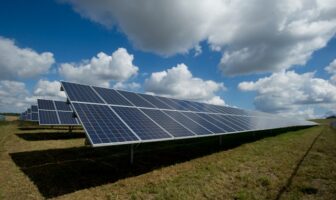
The English school system is expecting that the government is about to decrease the amount of money spent per pupil by approximately 6% over the next several years. With these findings and the continuous increase in energy prices, it is easy to understand the two leading causes for concern in the depletion of school budgets for many of the educations institutions around the country.
One of the ways to possibly generate funds while at the same time cover the increasing cost of electricity is solar power generation. Through the adoption of solar in Cheshire, schools will have a steady stream of revenue, and boost the public image of their institutions as far as supporting eco-friendly practices.
1. Earning money through government incentives:
The UK government first introduced the Feed-in Tariff scheme in 2010. The programme aims to encourage residential, commercial, and public institutions to invest in solar power generation. Any excess energy produced gets diverted back to the grid. The FIT scheme is still ongoing, and schools can take advantage of it to earn money.
To qualify for the benefit, a school needs to apply depending on the generation capacity of the solar panel system in place. If the solar panels have a generation capacity of 50kW or more, the school needs to apply under the ROO-FIT scheme. In addition to these schemes, schools may be eligible for other benefits such as Tariff Guarantee and Energy efficiency Relaxation.
Although the upfront cost is still a cause for concern, solar panels today are more affordable than before. This means that schools can look forward to a faster return on their investment.
2. Sell surplus energy produced:
The Feed-in Tariff scheme is one of the ways a school can generate an income from solar energy. Any excess electricity may be sold to private suppliers through an export tariff. By diverting excess power to the national grid, surrounding communities can also benefit from clean energy. This scheme is particularly beneficial out-of-term because the panels will continue to produce electricity even if the school is closed.
3. Protection from sudden energy price hikes:
The wholesale energy market is volatile, and with some political uncertainties looming on the horizon, prices are likely going to increase in the coming months and years. If a school is able to generate energy to cover a portion of the total consumption, the institution has a buffer from sudden price increases.
4. Reduced carbon emissions:
Shifting towards renewable energy sources is not only meant to insulate a school against increasing energy prices but most importantly, it is an excellent eco-friendly practice that will significantly reduce carbon emissions. This practice is good for the community and will also help boost the morale of school employees.
The school also benefits from a positive image within the community, where the institution is perceived to be a supporter of eco-friendly practices. The solar facilities can also serve as an educational tool used in science-related subjects. Most importantly, the students are learning and imbibing the values of environmental consciousness, and sustainable energy generation.
Read Also:




























